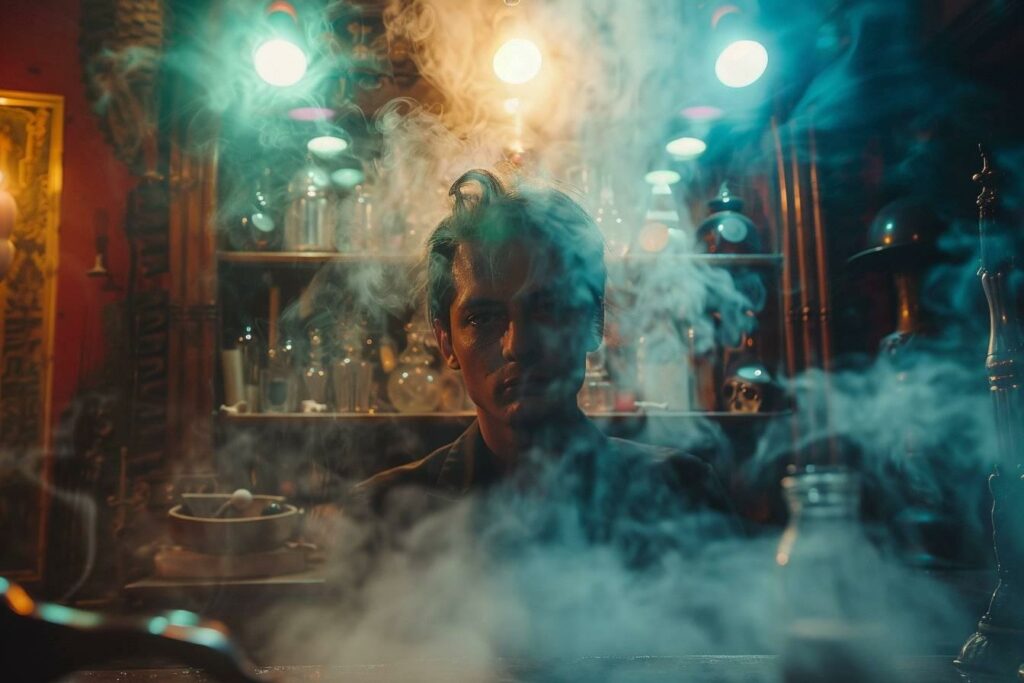Hypnosis and magic have fascinated mankind for centuries. These two mysterious arts captivate our imagination, arousing curiosity and wonder. Though distinct, they share some intriguing commonalities. Let’s delve into the fascinating world of these ancestral practices to discover their secrets and surprising links.
The origins and evolution of hypnosis and magic
Hypnosis and magic have deep roots in human history. Hypnosis has its origins in ancient healing practices, notably those of the Egyptians and Greeks. The term “hypnosis” itself comes from the Greek god of sleep, Hypnos. Over the centuries, the practice has evolved into a recognized therapeutic technique.
Magic, on the other hand, dates back to the dawn of time. The first magicians were often shamans or priests, regarded as intermediaries between the human and spirit worlds. Over time, magic has evolved into a performing art, combining illusion and entertainment.
Here’s an overview of the evolution of these two practices:
- Antiquity: use of hypnosis in healing temples
- Middle Ages: Magic is associated with witchcraft and persecuted
- 18th century: Franz Anton Mesmer develops “animal magnetism
- 19th century: Emergence of modern stage magic
- 20th century: Recognition of hypnosis as a therapeutic tool
Today,hypnosis is used in a variety of fields, from psychotherapy to pain management. Magic, meanwhile, continues to captivate crowds at shows and on television.
Techniques common to hypnosis and magic
Althoughhypnosis and magic appear to be distinct disciplines, they share many techniques and principles. These similarities partly explain why the two arts are often associated in the collective imagination.
Suggestion is a key element in both practices. In hypnosis, the practitioner uses verbal and non-verbal suggestions to induce an altered state of consciousness in the subject. Similarly, the magician uses suggestion to direct the audience’s attention and create illusion.
Misdirection, or the art of diverting attention, is a crucial technique in magic. It is also used in hypnosis to help the subject focus on certain aspects of his or her experience while ignoring others. This technique creates a state of intense focus, essential to both practices.
Here’s a table comparing the techniques used in hypnosis and magic:
| Technique | Hypnosis | Magic |
|---|---|---|
| Suggestion | Inducing a trance state | Creating illusion |
| Misdirection | To focus attention | Divert attention |
| Rapport | Establishing a connection with the subject | Creating complicity with the audience |
| Non-verbal language | Reinforce suggestions | Accentuate the effect of tricks |
These common techniques demonstrate thathypnosis and magic are based on a perfect mastery of human psychology and perception. Practitioners of both arts excel in the art of manipulating their audience’s attention and emotions.

Modern applications of hypnosis and magic
Hypnosis and magic have evolved over time, finding new applications in modern society. These ancestral arts are adapting to contemporary needs, offering innovative solutions in a variety of fields.
Therapeutic hypnosis is now widely recognized and used in the medical field. It helps treat a wide range of conditions, such as :
- Anxiety and stress
- Phobias and addictions
- Chronic pain management
- Sleep disorders
- Irritable bowel syndrome
Magic, on the other hand, has applications beyond simple entertainment. It is used as an educational tool to teach scientific or mathematical concepts in an entertaining way. Some magicians even collaborate with neuroscientists to study the mechanisms of perception and attention.
Mentalism, a branch of magic that simulates psychic abilities, often borrows techniques from hypnosis. This fusion of the two disciplines creates captivating shows that challenge our perceptions of reality.
In the business world,influence techniques derived from hypnosis and magic are increasingly used in marketing and communications. They help create more persuasive presentations and improve negotiation skills.
The rise of personal coaching has also opened new doors for hypnosis. Many coaches integrate hypnotic techniques into their sessions to help their clients achieve their personal and professional goals.
These modern applications testify to the versatility and continuing relevance ofhypnosis and magic in our society. They demonstrate how these ancient arts can adapt and contribute positively to various aspects of our daily lives.
The future of hypnosis and magic
The future ofhypnosis and magic looks exciting, with many prospects for evolution and innovation. These mysterious arts continue to reinvent themselves, adapting to technological advances and new scientific discoveries.
In the field of hypnosis, neuroscientific research is opening up new perspectives. Studies on the brain are leading to a better understanding of the mechanisms of hypnotic trance, paving the way for more targeted and effective therapeutic applications.
Virtual reality (VR) offers immense potential for hypnosis. Researchers are already exploring the use of VR to induce deeper trance states and create immersive hypnotic experiences. This technology could revolutionize the practice of remote hypnotherapy.
As for magic, the integration of technologies such as augmented reality and artificial intelligence promises to create even more spectacular illusions. Magicians like Marco Tempest are already exploring these new frontiers, fusing traditional magic with technological innovation.
Ethics will play a crucial role in the evolution of these practices. With the growing power of hypnosis and magic to influence perceptions, the question of their responsible use becomes paramount. Discussions on the ethics of these practices are likely to develop in the years to come.
Finally, the convergence of hypnosis, magic and other disciplines such as psychology, neuroscience and even quantum physics could open up exciting new fields of exploration. This interdisciplinarity promises exciting discoveries about the nature of consciousness and reality.
The future ofhypnosis and magic therefore promises to be rich in possibilities, blending tradition and innovation. These mysterious arts will undoubtedly continue to fascinate, challenge and inspire us for many years to come.

